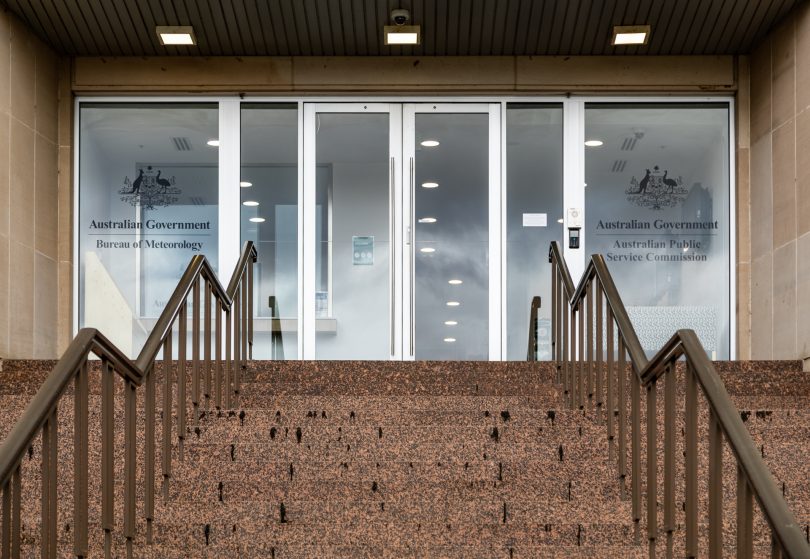
The Australian Public Service Commission will deliver its State of the Service report later this year. Photo: Michelle Kroll.
Many senior executives in the Australian Public Service are being rated poorly on how they engage with their staff in the post-COVID era when so much employee contact is online.
Working from home and other flexible arrangements have added to communication breakdowns that the APS is struggling to deal with.
This is just some of the feedback public service bosses are ploughing through now that the 2023 APS Employee Census results are in.
Additionally, they are learning that employees have not been happy with the state of flux many of their departments have been in at senior executive levels since the change of government.
Bullying and harassment continue to be a problem inside the APS, with increasing frustration that little seems to be done about it.
There is, however, a growing sense of pride in the work being done across a number of agencies.
Federal Government departments are currently analysing the results of the census in an effort to determine how they might affect their agencies into the future.
While results are not yet public, departments have received survey outcomes from their respective staff and have, in many cases, already distributed information through intranet channels and in-house meetings.
The APS survey took place over a month from early May to early June, with employees invited to participate during that period and provide feedback about their workplaces.
A service-wide snapshot will be provided in November with the public release and parliamentary tabling of the State of the Service Report, which is partially fed by census feedback.
But Region has spoken to a number of senior public servants across agencies who are privy to census information and were willing to share some unofficial insights.
They have spoken on the assurance of anonymity. Neither will departments and agencies be identified.
While relatively few departmental secretaries have changed since Labor came to office last year, it is in the Senior Executive Service ranks just below the very top where there has been more significant movement and, in some cases, positions left vacant for far too long.
“There have been too many SES roles either changed or left unfilled in my agency that it has become very unsettling,” one said.
“The census results are showing that this has had a ripple effect on staff. There was considerable displeasure expressed in the survey.”
Another said it was clear that staff were feeling a sense of abandonment in some cases where assistant secretaries and even deputy secretaries were moving on.
“The APS isn’t doing enough to keep good people,” they said.
“Yes, that has a lot to do with the competitive job market right now, but there doesn’t seem to be any cohesive strategy to address that.”
One strong theme emerging from the census is a desire from employees for the results to be taken seriously.
“Every year there is talk about the APS Census from the bosses but little seems to change,” one senior public servant told Region.
“It’s clear from census results this year that people really want their views taken on board. They want changes to emerge from what they are sharing.”
That is particularly the case when it comes to workplace bullying.
“Bullying and harassment are still big concerns,” one public servant said.
“It is an unwanted blight. People are saying in the census that they are being bullied or harassed, but it’s not always reported or acted [on] beyond the census.”
One big concern the census has highlighted is the struggle APS leaders face in building cohesive teams.
“Senior executives have gotten really poor ratings in terms of engagement with staff, particularly with flexible working hours,” one said.
“Long gone are the days where you can fill an auditorium with people, so how do you get a sense of people getting on the same page and feeling engaged when everything’s online?
“Some SES are getting very low ratings in the census in that area.”
In his first speech as APS Commissioner, Gordon de Brouwer said in June that one of the changes for the service will be a requirement for all agencies to publish APS Census results and also publish their action plans to address the findings.
“That’s designed to lift transparency and encourage accountability and continuous improvement in agencies,” he said.
Original Article published by Chris Johnson on Riotact.









